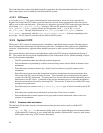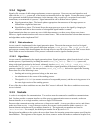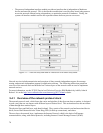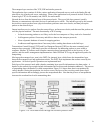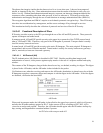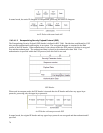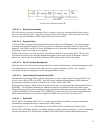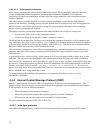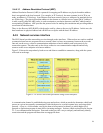5.4.2 Transport layer protocols
The transport layer protocols supported by the SLES kernel are TCP and UDP.
5.4.2.1 TCP
TCP is a connection-oriented, end-to-end, reliable protocol designed to fit into a layered hierarchy of
protocols that support multi-network applications. TCP provides for reliable IPC between pairs of processes
in host computers attached to distinct but interconnected computer communication networks. TCP is used
along with the Internet Protocol (IP) to send data in the form of message units between computers over the
Internet. While IP takes care of handling the actual delivery of the data, TCP takes care of keeping track of
the individual units of data, or packets, that a message is divided into for efficient routing through the
Internet. For more information about TCP, refer to RFC 793.
5.4.2.2 UDP
UDP is a connectionless protocol that, like TCP, runs on top of IP networks. UDP/IP provides very few error
recovery services, offering instead a direct way to send and receive datagrams over an IP network. It is used
primarily for broadcasting messages over a network. This protocol provides a procedure for application
programs to send messages to other programs with a minimum of protocol mechanism. The protocol is
transaction oriented, and delivery and duplicate protection are not guaranteed. For more information about
UDP, look into RFC 768.
5.4.3 Network layer protocols
The network layer protocols supported by the SLES kernel are IP and ICMP.
5.4.3.1 Internet Protocol Version 4 (IPv4)
IPv4, aka simply IP, is the standard that defines the manner in which the network layers of two hosts interact.
These hosts can be on the same network, or reside on physically distinct heterogeneous networks. In fact, IP
was designed from the very beginning with inter-networking in mind.
IP provides a connectionless, unreliable, best-effort packet delivery service. Its service is called
connectionless because in some ways it resembles the Postal Service. IP packets, like telegrams or mail
messages, are treated independently. Each packet is stamped with the addresses of the receiver and the
sender. Routing decisions are made on a packet-by-packet basis. IP is quite different from connection-
oriented and circuit-switched phone systems that explicitly establish a connection between two users before
any conversation, or data exchange, takes place, and maintain a connection for the entire length of exchange.
For information about IP packets, IP addresses, and addressing formats refer to RFC 1883.
5.4.3.2 Internet Protocol Version 6 (IPv6)
The SLES kernel supports Internet Protocol version 6. IPv6 is the standard that defines the manner in which
network layers of two hosts interact, and is an increment to existing IPv4. The TOE is in compliance with
IPv6 source address selection as documented in RFC 3484, and implements several new socket options
(IPV6_RECVPKTINFO, IPV6_PKTINFO, IPV6_RECVHOPOPTS, IPV6_HOPOPTS,
IPV6_RECVDSTOPTS, IPV6_DSTOPTS, IPV6_RTHDRDSTOPTS, IPV6_RECVRTHDR,
IPV6_RTHDR, IPV6_RECVHOPOPTS, IPV6_HOPOPTS, IPV6_RECVTCLASS) and ancillary data in
order to support advanced IPv6 applications including ping, traceroute, routing daemons and others.
72



